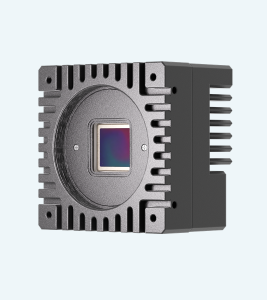The deployment of industrial machine vision in any facility requires a few vital steps or concepts to operate effectively, providing an increased level of productivity and accuracy. Step 1: Define your outcomes. If you are interested in implementing machine vision to improve quality control, increase production speed or reduce labor costs; knowing why will help you make sure the systems suits your needs. In one case, a 30% increase in throughput was reported by a company packaging food items with vision systems integrated to perform inspection tasks.
Next, you must choose the correct hardware. There are various resolutions available in machine vision cameras, from 1 to 20 MP; the selection of camera will depend on how much detail you need in your inspections. I can understand how high-resolution cameras would be ideal for industries where the finest possible defects must be detected, like in electronics and pharmaceuticals. There might be applications for which a lower resolution camera would suffice (automated sorting, in the above gif) yet still gain massive gains on speed.
A good starting camera and lens are also important, as well.TRAILING. When the system captures images, proper lighting ensures that they will have enough contrast for imperfections to be detected. Uneven lighting can result to false readings, which is why LED or fiber optic lamps should be incorporated into the system so that each inspection area are evenly illuminated. Lenses that are adjustable can be used to accommodate a range of object sizes, and allows your system more flexibility in handling variations between different products.
The software that allows real-time image processing and data analysis also needs to be integrated. An advanced set of machine learning algorithms allows the system to stay up-to-date with product appearance changes, without any sort of manual intervention. As an example, one of the top automotive manufacturer managed to cut defect discovery time by up to 40% through machine vision software with AI algorithms this year — a clear figure that demonstrates how beneficial modern technologies are applied in large scale factory operations.
As Elon Musk has long observed, the function of technology when it comes to automation is not speed but creating operation which are more accurate and consistent. This philosophy is important in the deployment of industrial machine vision where minor increases in detection accuracy can result in substantial savings from reduced rework and product returns.

Cost analysis is a key component of implementation. Machine vision systems generally cost from $5,000 to as much as $50,000 each depending on the complexity and size. That said, ROI in most cases would be within 12–18 months due to its efficiency improvements and reduced wastage.
Another important step is training staff to run and maintain the system. Although machine vision systems are mostly self-driven, they still need periodic calibration and servicing to function properly. In the grand scheme of things, this helps to maximize return on investment by extending equipment lifecycles trough regular staff training.
Industrial Machine Vision industrial machine vision offers companies the ability to update their inspection techniques, leading drastically improved speed and accuracy. Click here to learn more ABOUT OUR SOLUTIONS FOR YOUR FACILITY on industrial machine vision.